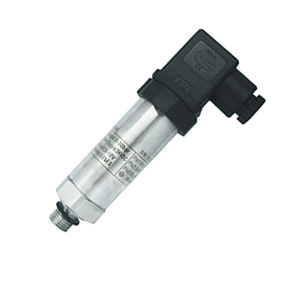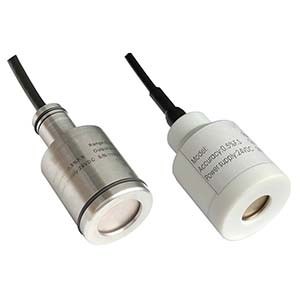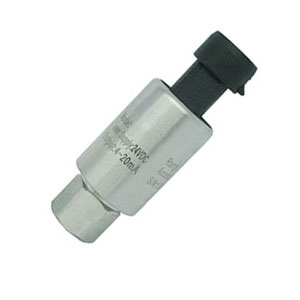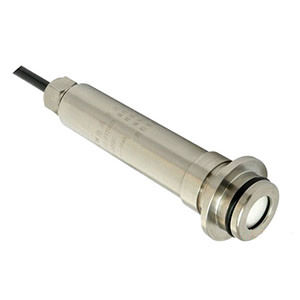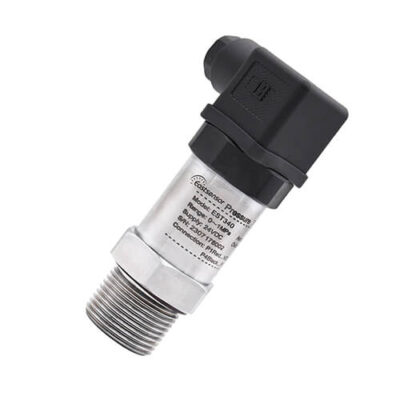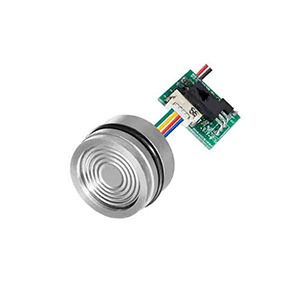What is a weather forecasting pressure sensor?
Pressure sensors are essential in weather forecasting, as they help measure atmospheric pressure, a critical parameter for predicting weather patterns. Atmospheric pressure is the force exerted by the weight of air above a given point on the Earth’s surface. Changes in atmospheric pressure can indicate the arrival of different weather systems, such as
- High-pressure systems (associated with clear, sunny weather)
- Low-pressure systems (associated with cloudy, rainy, or stormy weather).
Barometric pressure sensors are commonly used in weather forecasting to measure atmospheric pressure. These sensors can be either absolute or differential pressure sensors. Absolute pressure sensors measure the pressure relative to a vacuum, while differential pressure sensors measure the pressure difference between two points.
How benefits pressure sensors for the weather forecasting industry?
Barometric pressure sensors are often incorporated into weather stations or meteorological equipment. These sensors collect real-time data on atmospheric pressure, which meteorologists then use to analyze and predict weather patterns. For example, a rapid drop in atmospheric pressure could indicate the approach of a storm, while a steady increase in pressure may suggest the arrival of a high-pressure system with clear skies.
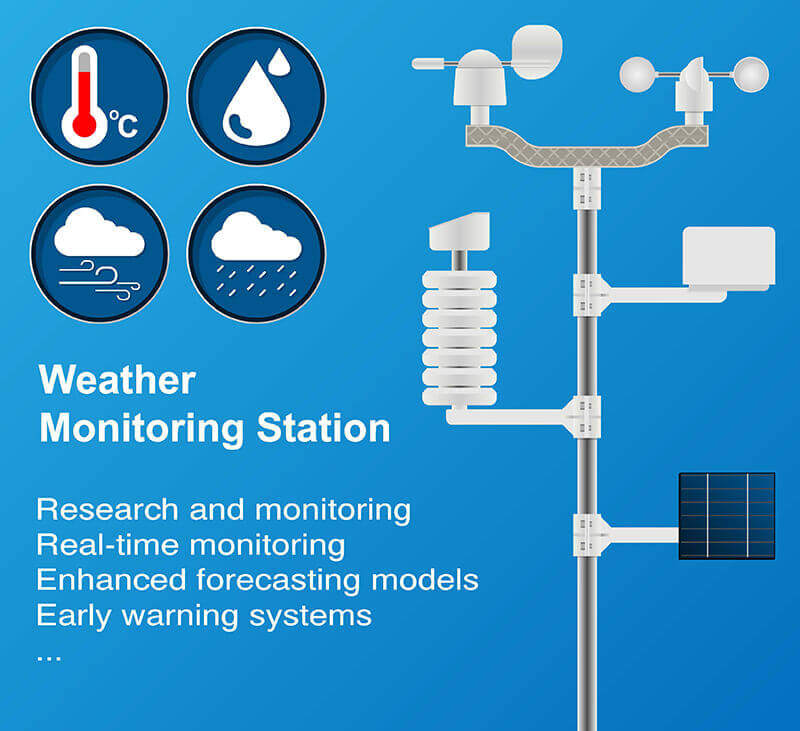
Improved research and monitoring:
Pressure sensors, specially designed for weather forecasts, play a vital role in climate research and monitoring by providing accurate, continuous, and long-term atmospheric pressure data. This data helps researchers understand climate patterns, trends, and variations over time, which aids in studying climate change and its potential impacts.
In climate research, networks of weather stations equipped with pressure sensors are deployed across various regions, including remote and extreme environments. These stations collect data on atmospheric pressure, temperature, humidity, wind speed, and other parameters, contributing to a comprehensive database for climate analysis.
For instance, a research station in the Arctic or Antarctic might use high-quality pressure sensors, such as the ESS01 MSC pressure sensor or similar models, which have a measurement range of 500 to 1100 hPa and an accuracy of ±0.1 hPa. These sensors can withstand extreme temperatures and harsh conditions, ensuring accurate and reliable data collection.
The data collected by these sensors is then transmitted to climate research centers, which are analyzed and incorporated into climate models. These models help researchers predict future climate trends, assess the potential impacts of climate change, and develop mitigation strategies.
One example of a climate research project utilizing pressure sensor data is the World Meteorological Organization’s (WMO) Global Atmosphere Watch (GAW) program. GAW is a worldwide observation network that monitors greenhouse gases, aerosols, and other climate-relevant parameters. It includes more than 300 weather stations equipped with pressure sensors, providing valuable climate research and monitoring data.
Another example is the European Space Agency’s (ESA) Climate Change Initiative (CCI), which uses satellite-based pressure sensors and ground-based measurements to monitor and analyze long-term climate trends. Pressure sensors like those aboard the MetOp series of satellites measure atmospheric pressure at various altitudes, providing essential data for climate modeling and analysis.
Real-time monitoring:
Pressure sensors play a crucial role in the real-time monitoring of weather forecasts by providing continuous and accurate atmospheric pressure data. This data helps meteorologists better understand and predict weather events, improving the accuracy and reliability of predictions. Here are some examples of how pressure sensors are used for real-time weather monitoring:
In the line of surface weather stations, networks of weather stations on the ground, such as the Automatic Weather Station (AWS) network, use pressure sensors to measure atmospheric pressure. These sensors have a measurement range of 50 to 1100 hPa with an accuracy of ±0.1 hPa. Real-time pressure data from these stations is transmitted to meteorological centers, where it is used to update weather models and improve forecast accuracy.
Weather Forecasting Pressure Sensors are also launched into the atmosphere using weather balloons to measure pressure at various altitudes. These sensors can measure pressure from 3 to 1080 hPa with an accuracy of ±0.5 hPa. The real-time data gathered by radiosondes is crucial for understanding the vertical structure of the atmosphere, which is essential for weather prediction.
Do you know commercial aircraft are often equipped with pressure sensors? It uses a pressure sensor to measure atmospheric pressure during flight. These sensors have a measurement range of 0 to 1100 hPa with an accuracy of ±0.1 hPa. Real-time pressure data from aircraft can provide additional insights into atmospheric conditions, particularly at high altitudes, improving the accuracy of weather forecasts.
For this job, ESS01, with high accuracy, can handle high-pressure measurements under high temperatures.
Satellites like the National Oceanic and Atmospheric Administration’s (NOAA) Geostationary Operational Environmental Satellite (GOES) series use pressure sensors to measure atmospheric pressure at various altitudes. These satellite-based measurements and ground-based observations provide a comprehensive view of the Earth’s atmosphere, enabling real-time monitoring and improved weather forecasting.
Moreover, ocean buoys, such as the Tropical Atmosphere Ocean (TAO) buoy array, are equipped with pressure sensors to measure sea-level air pressure. This data is essential for understanding the interactions between the atmosphere and the ocean, which can significantly influence weather patterns.
Enhanced forecasting models:
Pressure sensors enhance weather forecasting models by providing accurate and reliable atmospheric pressure data. This data is essential for understanding and predicting various weather phenomena.
NWP models, such as the Global Forecast System (GFS) and the European Centre for Medium-Range Weather Forecasts (ECMWF) model, require accurate pressure data for initializing and updating their simulations. Pressure sensors like with high accuracy can provide precise pressure measurements (±0.1 hPa accuracy), which are integrated into these models, leading to more accurate predictions.
On the other hand, data assimilation techniques are also used to merge pressure measurements from various sources, including surface weather stations, radiosondes, aircraft, and satellites. This process helps correct model errors and refine initial conditions for NWP models. Accurate pressure measurements from sensors like these are crucial for effective data assimilation.
Short-term weather forecasts, known as nowcasting, rely heavily on real-time pressure data to predict rapidly changing weather conditions. Weather Forecasting Pressure Sensors provide continuous pressure measurements at various altitudes, enabling meteorologists to identify and track weather systems, like cold fronts and low-pressure areas, more accurately.
Long-term weather forecasting and climate models, such as the Community Earth System Model (CESM), require accurate pressure data to understand and predict the Earth’s climate system. Forecasting Pressure Sensors like ESS01 (±0.05%-0.01% FS accuracy), provides precise pressure measurements from various sources, including ocean buoys and surface weather stations, which help improve climate models’ accuracy.
Accurate pressure measurements from various sources, including drop sondes equipped with pressure sensors, can help meteorologists to monitor and predict the development and track of hurricanes.
Meanwhile, by incorporating real-time pressure data into forecasting models, meteorologists can provide more accurate and timely warnings, ultimately helping to save lives and reduce property damage.
Early warning systems:
Pressure sensors play a significant role in early warning systems for weather forecasting by providing real-time, accurate atmospheric pressure data. This data helps meteorologists monitor and predict severe weather events, allowing them to issue timely alerts and warnings. Here are some examples of how pressure sensors contribute to early warning systems:
Pressure sensors, such as the EST330S (±0.1% FS accuracy), are deployed in coastal regions to monitor changes in atmospheric pressure that can indicate an approaching storm surge. Early detection of pressure drops helps authorities issue timely warnings, allowing coastal communities to evacuate and prepare for potential flooding.
Rapid changes in atmospheric pressure are often associated with tornado formation. Pressure sensors strategically placed in tornado-prone areas can help detect these pressure changes, enabling meteorologists to issue tornado warnings more quickly.
Typhoon and hurricane tracking: Pressure sensors installed in weather balloons, such as the EST3120 (±0.5% accuracy), provide continuous pressure data from storm systems. This data helps meteorologists track the development and movement of typhoons and hurricanes, allowing them to provide early warnings to affected regions.
In regions with volcanic activity, pressure sensors with ±0.1% FS accuracy can monitor pressure changes within the Earth’s crust. A sudden increase in pressure can indicate an imminent eruption and early warning systems can alert nearby communities to evacuate.
Also, during Hurricane Harvey, pressure sensors deployed in weather stations, dropsondes, and buoys provided real-time atmospheric pressure data, enabling meteorologists to monitor the storm’s development and predict its path more accurately. The early warning system allowed authorities to issue timely evacuation orders, helping to save lives and minimize property damage.
What are the limitation and risks when choosing pressure sensors for the weather forecasting industry?
Before choosing Weather Forecasting Pressure Sensor, you must carefully consider the below factors and select an appropriate pressure sensor, so you can ensure reliable and accurate data collection for weather forecasting applications.
- Measurement errors: Measurement errors can significantly impact the quality of weather forecasts. For instance, if a sensor has an accuracy of ±1 hPa, this could result in a 10-meter mistake in altitude estimation. Such inaccuracies can affect the reliability of forecast models, leading to less accurate predictions. Choose a pressure sensor with appropriate accuracy, resolution, and stability for the intended application to minimize measurement errors.
- Environmental susceptibility: Pressure sensors must withstand various environmental conditions, such as temperature extremes or high humidity. A sensor rated for -20 to +60 °C may fail in polar regions below -40 °C, resulting in unreliable data or sensor failure. Select a sensor with a wide temperature range and resistance to environmental factors like humidity, moisture, and dust.
- Inadequate ingress protection: Pressure sensors must be protected against dust, water, and ice to ensure consistent performance. A sensor with an IP65 rating may not withstand heavy rainfall or immersion in water, leading to sensor damage or failure. Consider the expected environmental conditions and choose a sensor with appropriate ingress protection ratings.
- Slow response time: A slow response time can hinder the detection of rapid pressure changes associated with severe weather events, such as tornadoes. A sensor with a response time of 500 ms may not capture pressure changes quickly enough. Select a pressure sensor with a fast response time to monitor sudden atmospheric changes accurately.
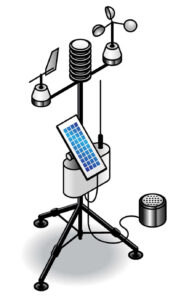
- Power consumption: High power consumption can limit battery-powered weather stations or balloons’ operational life. A sensor consuming 50 mA could drain a 2000 mAh battery in just 40 hours. Choose a pressure sensor with low power consumption to extend battery life and minimize the need for frequent battery replacements.
- Size and weight constraints: Bulky or heavy sensors may not be suitable for certain applications, such as weather balloons or portable weather stations. A sensor weighing 500 g may be too heavy for a lightweight weather balloon payload. Opt for compact and lightweight pressure sensors more suitable for the intended application.
- Compatibility issues: Compatibility with data acquisition systems or other equipment is essential for seamless integration. A sensor with an I2C digital output may not be compatible with a data logger that only supports 4-20 mA analog inputs. Ensure that the chosen pressure sensor is compatible with the existing systems and equipment.
- Calibration and maintenance: Calibration and maintenance are crucial for maintaining sensor accuracy and prolonging its lifespan. A sensor that requires specialized equipment for calibration may not be suitable for remote weather stations. Choose a pressure sensor that can be easily calibrated and maintained using readily available equipment and resources.
Wrap up
Pressure sensors play a critical role in weather forecasting, offering benefits such as real-time monitoring, enhanced forecasting models, and early warning systems.
When selecting a pressure sensor for weather forecasting, it’s crucial to consider factors like measurement accuracy, environmental resistance, ingress protection, response time, power consumption, size and weight, compatibility, and ease of calibration and maintenance.
By carefully evaluating these factors and choosing a suitable pressure sensor, you can ensure accurate and reliable data collection for weather forecasting applications, ultimately contributing to improved predictions and public safety.

